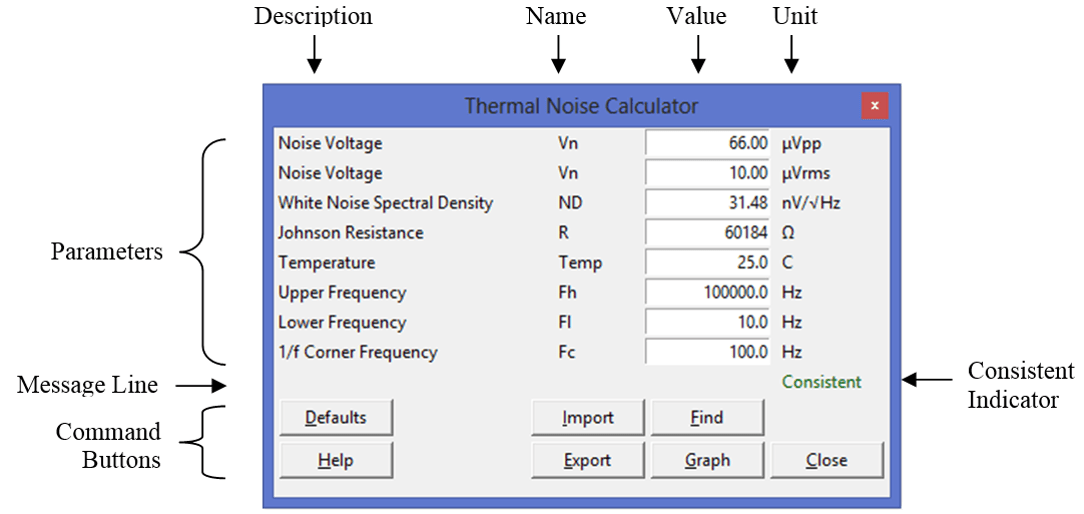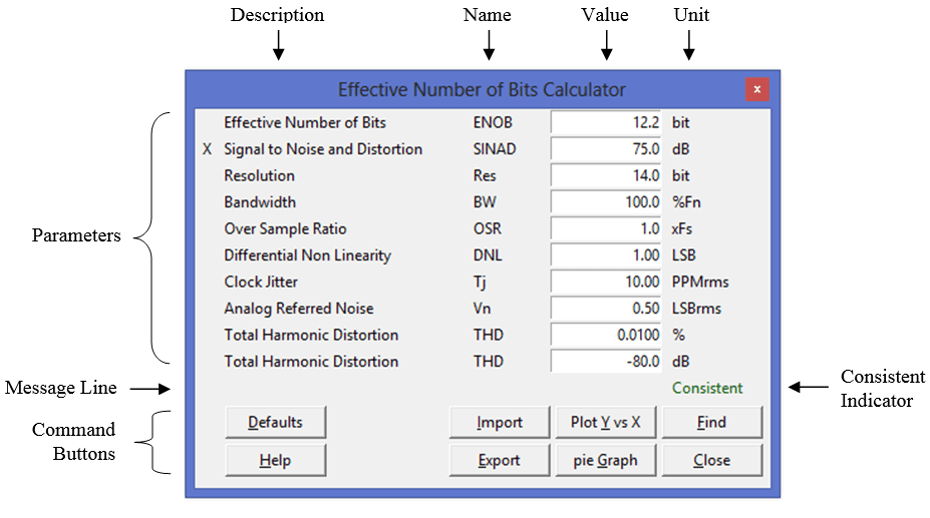Calculators for Estimating Noise Amplitudes & Selecting the Best Data Converter
Renesas' Thermal Noise Calculator (TNC) and Effective Number of Bits (ENOB) Calculator help analyze noise that is present in semiconductor devices as well as noise due to signal processing in data converters.
Using the calculators, you can enter or find all parameters. The calculators also offer an indication of consistent parameters, validation to prevent illegal entries, and import, export and graphing functionality.
System Requirements
- Windows 7® or Windows® 8
- File Size: 30MB
Thermal Noise Calculator
The Thermal Noise Calculator aids in the analysis of thermal noise found in resistors and other noise sources. The TNC finds the noise voltage generated by any device if the white noise spectral density and 1/f corner frequency are known.

Parameters
- Noise Voltage, Vn, in μVpp or μVrms
- White Noise Spectral Density, ND, in nV/√Hz
- Johnson Resistance, R, in Ω
- Temperature, T, in °C
- Upper Frequency, Fh, in Hz
- Lower Frequency, Fl, in Hz
- 1/f Corner Frequency, Fc, in Hz
Effective Number of Bits Calculator
ENOB is an AC specification and is synonymous with Signal to Noise and Distortion. The ENOB Calculator aids in the design and analysis of data converter application circuits. It calculates the effective number of bits of an ideal data converter.

Parameters
- Effective Number of Bits, ENOB, in bits
- Signal to Noise and Distortion, SINAD, in dB
- Resolution, N, in bits
- Bandwidth, BW, in % of the Nyquist frequency, or Over Sample Ratio, OSR, as a multiple of the sample frequency
- Average Differential Nonlinearity, DNL, in LSB
- Clock Jitter, Tj, in PPMrms of the clock period
- Analog Referred Noise, Vn, in LSBrms
- Total Harmonic Distortion, THD, in % or dB
